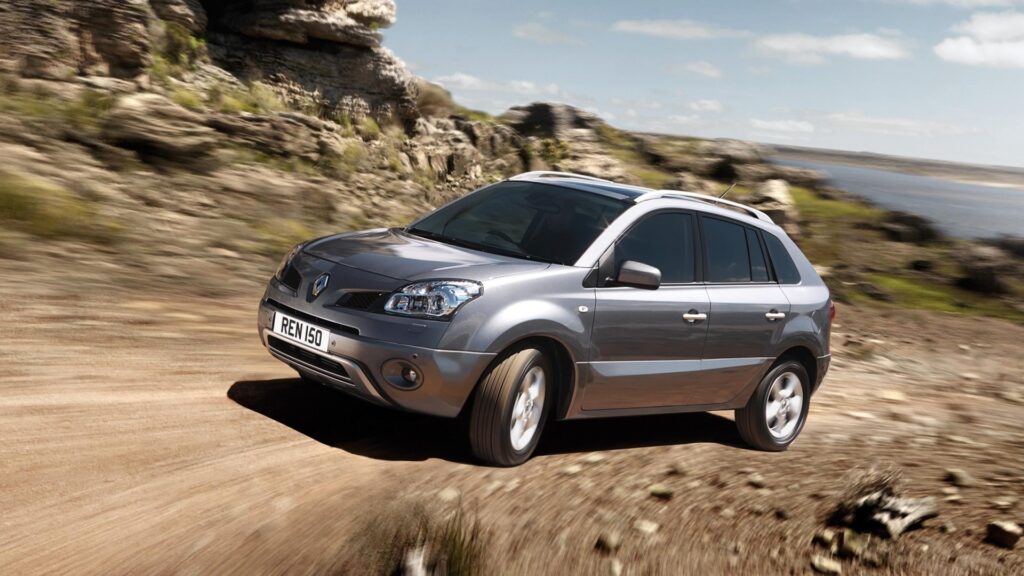
THE DESIGN boss for a major carmaker has revealed the unexpected motors set to make a comeback and it’s good news for families.
Once a regular sight on roads across Europe, these motors could make a stunning return to shake up the family car market.
Gilles Vidal, Renault’s design boss, predicts the people carrier could make a comeback as “SUV bashing” becomes more prominent.
The likes of the Renault Scenic, Vauxhall Zaifra, Ford Galaxy and Citroen Picasso were once the first-choice for families across the continent.
They used to account for more than 10% of the regional car market with their ability to accommodate up to seven people in a tall cabin.
And they occupied a footprint comparable to an estate car too.
But the decline of the people carrier, or multi-purpose vehicle (MPV), started in 2006 when Nissan launched the Qashqai.
It came to be the default choice for families and dominated Europe’s car market.
At present, SUVs make up more than half of all European car sales while people carriers have dropped to a market share in the low single digits.
But Giles Vidal believes a renaissance of the people carrier is on the cards with the transition to electrification.
Car manufacturers are striving to make their motors as efficient as possible and exploit the packaging freedoms afforded by EV “skateboard” architecture.
EV “skateboard” architecture refers to the EV chassis design where the the battery pack, electric motors, and other core components are integrated into a flat, skateboard-like platform.
“SUVs won the battle against the MPVs because MPVs are cars that you need but you don’t desire, and suddenly SUVs with the same engines, same weight, same everything – they are shapes that you will desire,” Vidal said.
But now, Vidal claims, there’s a lot of “SUV bashing” in Europe.
However, he added that the general concept of an SUV is “still attractive” today to most people and remain a functional and practical vehicle.
But as cars become more aerodynamic in pursuit of efficiency, he adds that we may see a comeback of the lower, sleeker and more MPV-like motors.
Vidal predicts that SUVs will attempt to become more efficient, becoming lower and having better aerodynamics.
He said: ” They will morph into a very efficient car, less energy consuming, with equivalent habitability and roominess and everything that’s probably the trend.”
Renault’s Embleme concept, which is due in production in the coming years as the first of a new-generation electric car line-up, is a “morphing of all of that”.
It has a raised ride height but a sleeker, lower profile than any of Renault’s current SUVs.
Multi-purpose vehicles are already taking off in China, the world’s biggest car market.
Manufacturers such as Zeekr, Lynk&Co, Li Auto, Denza and Xpeng have all launched luxurious three-row people carriers with technology and refinement to rival the likes of the Mercedes S-Class and BMW 7 Series.
Vidal believes that the pursuit of efficiency could spur an all-out rethink for Europe’s most popular type of car.
But he did admit that MPVs would be broadly comparable with SUVs in terms of energy consumption and usage of materials.
“I see two trends: super-efficient SUV transformation, and maybe a big comeback of sexy, desirable MPVs,” he said.
Elsewhere, Renault has confirmed that its new EV will arrive in the UK shortly after its launch next year.
The Renault Twingo electric car is set to launch in the UK sometime in 2026 with an affordable starting price tag of £16,700.
And an iconic 1980s Renault 5 Turbo is returning as an EV “beast” in 2027.
Each car will be outrageously fast, hand built, predominantly carbon fire and priced at around £135,000.








